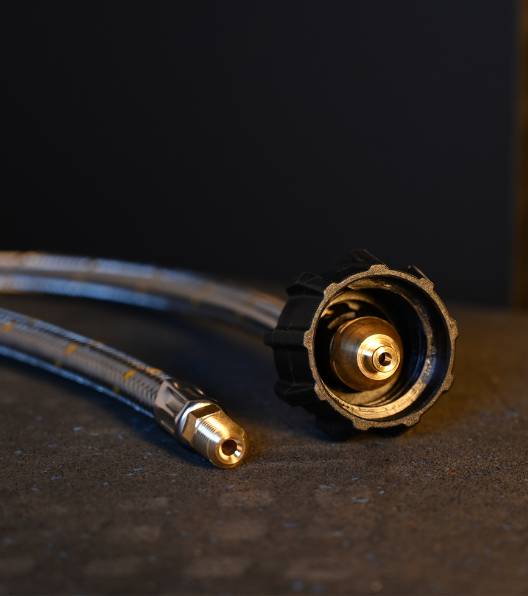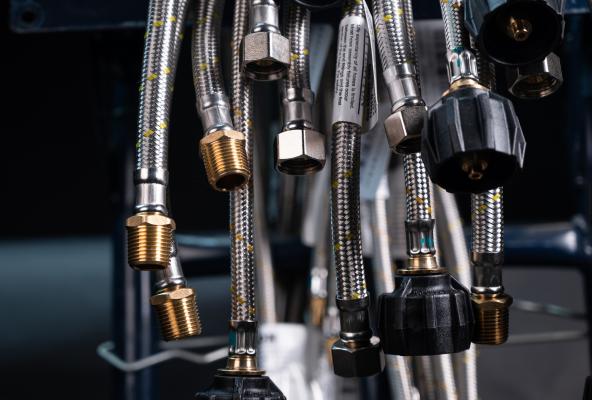Bromic gas hoses are categorised into Class A, Class B, Class C and Class D based on their maximum working pressure and temperature range below.
| Class | Typical Application | Max. Working Pressure @ 23°C +/- 2°C | Working Temperature Range |
|---|---|---|---|
| A | Low pressure appliance hose | 14 kPa | -20°C to +65°C |
| B | Low pressure, high temperature appliance hose | 14 kPa | -20°C to +125°C |
| C | High pressure appliance and gas tool hose | 2600 kPa | -20°C to +65°C |
| D | High pressure, high temperature appliance and gas tool hose | 2600 kPa | -20°C to +125°C |
We do not recommend using hose extensions as adding an extra hose on the line will increase the chance of a leak and/or breakage. Instead, replace the hose with a longer hose. At Bromic, we supply gas hoses up to 3000mm in length.
Gas adaptors must NOT be used to connect an appliance with a new connection to a cylinder with an old POL valve as they give an additional leakage risk. The change between threads means that when tightening one side of the adaptor, the other end is at risk of creating a new leak.
If a customer purchases a new gas appliance with the LCC27 connection, they must replace or swap out their old LPG cylinder (with a POL valve) to one with a LCC27 connection.
For more information on Australia's new standard LCC27 (Type 27) connection, read our full blog post here.
In Australia, the Type 21 (POL) connection has been superseded by the LCC27 (Type 27) connection. LCC27 is now the standard connection used for leisure gas cylinder valves. Over a 10-year period, LCC27 will be phased in as old gas cylinders get re-tested and changed over. Read more


Bromic PVC gas hoses are manufactured with high-quality brass fittings and a polyvinyl chloride (PVC) hose, providing extensive durability. Approved by the Australian Gas Association for use with gas.
View more categories